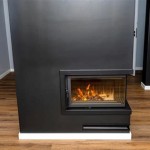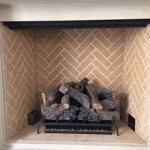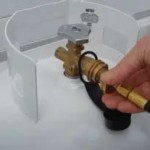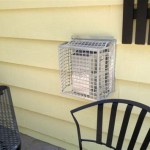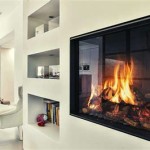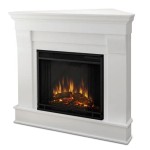Living Rooms With TV Above Fireplace: Balancing Aesthetics and Functionality
The arrangement of a living room often revolves around two focal points: the television and the fireplace. Increasingly, homeowners are opting to combine these elements by mounting the television above the fireplace. This configuration presents both advantages and challenges in terms of design, ergonomics, and practicality. This article aims to explore the considerations involved in integrating a TV above a fireplace, offering insights into achieving a harmonious and functional living space.
Assessing the Feasibility and Practicality
Before committing to mounting a television above a fireplace, a thorough assessment of the feasibility and practicality of the setup is crucial. Factors such as the fireplace type, the television size, and the viewing distance must be carefully considered. Not all fireplaces are suitable for this type of installation, and failing to account for these variables can lead to unsatisfactory results or even safety hazards.
One of the primary considerations is the heat generated by the fireplace. Televisions are sensitive electronic devices, and prolonged exposure to excessive heat can damage internal components, shortening their lifespan. Gas fireplaces tend to produce less radiant heat compared to wood-burning fireplaces, making them a more suitable option for this setup. If a wood-burning fireplace is the only option, measures must be taken to mitigate heat exposure, such as installing a mantel to deflect heat upwards or using a heat shield behind the television.
The size of the television should also be proportional to the size of the fireplace and the viewing distance. A television that is too large can overwhelm the fireplace and disrupt the visual balance of the room. Conversely, a television that is too small may be difficult to see from a distance. Generally, a television size that fits comfortably within the width of the fireplace surround visually is appropriate. The height at which the television is mounted should also be considered, ensuring comfortable viewing without straining the neck.
Finally, the existing wiring and electrical outlets must be evaluated. If the location above the fireplace does not have existing electrical outlets or cable connections, professional installation may be required to ensure safe and concealed wiring. Concealing the wiring is essential to maintain a clean and aesthetically pleasing appearance. This often involves running wires through the wall, which can be a complex and time-consuming task.
Addressing Ergonomic Concerns and Viewing Angle
Mounting a television too high can lead to discomfort and strain, particularly during prolonged viewing sessions. The optimal viewing angle is typically considered to be at or slightly below eye level when seated. When a television is mounted above a fireplace, it is often positioned higher than the ideal viewing angle, which can lead to neck strain and eye fatigue. Therefore, selecting an appropriate mounting bracket and considering the seating arrangement are essential.
Tilt-adjustable mounting brackets can help compensate for the elevated position of the television. These brackets allow the television to be angled downwards, bringing the screen closer to eye level. The degree of tilt required will depend on the height of the television and the distance between the television and the seating area. Experimenting with different tilt angles is advisable to find the most comfortable viewing position.
The seating arrangement should also be carefully considered. Placing seating further away from the television can help to mitigate the impact of the elevated viewing angle, as the distance will allow for a more natural head and neck posture. Alternatively, using reclining chairs or sofas can help to improve viewing comfort by allowing viewers to recline and reduce neck strain.
In situations where the fireplace is significantly taller than the average television, alternative solutions may be considered. These might involve creating a recessed niche above the fireplace to lower the television's mounting height or opting for a smaller television that is more proportionally sized to the fireplace. Consulting with an interior designer or professional installer can provide valuable insights and guidance on achieving optimal ergonomics in the living room space.
Design Considerations and Aesthetic Integration
Integrating a television above a fireplace requires careful consideration of the overall design and aesthetics of the living room. The goal is to create a cohesive and visually appealing space where the television and fireplace complement each other rather than competing for attention. This involves selecting the right materials, finishes, and decorative elements to achieve a harmonious balance.
The style of the fireplace surround can significantly influence the overall aesthetic. A traditional fireplace with ornate detailing may require a different approach compared to a modern fireplace with clean lines and minimalist design. In general, it is best to select a television and mounting bracket that complement the style of the fireplace. For example, a sleek, frameless television may be a good choice for a modern fireplace, while a television with a decorative frame may be more suitable for a traditional fireplace.
The use of decorative elements can help to integrate the television into the overall design scheme. Items such as artwork, candles, and plants can be strategically placed around the fireplace and television to create visual interest and balance. These elements can also help to draw the eye away from the television when it is not in use, preventing it from becoming the sole focal point of the room.
Concealing the television is another option to consider. This can be achieved through various methods, such as using a retractable screen that disappears when not in use or incorporating the television into a custom-built cabinet or shelving unit. While concealing the television may require a larger investment, it can significantly enhance the aesthetic appeal of the living room and create a more streamlined and uncluttered look.
The color palette of the living room should also be taken into account. Selecting colors that complement both the television and the fireplace can help to create a cohesive and harmonious space. Neutral colors, such as grays, whites, and beiges, are often a safe choice, as they tend to work well with a variety of styles and designs. However, bolder colors can also be used to create a more dramatic and visually striking effect. Ultimately, the color palette should reflect the homeowner's personal preferences and create a welcoming and comfortable atmosphere.
In conclusion, integrating a television above a fireplace requires careful planning and consideration of various factors, including practicality, ergonomics, and aesthetics. By assessing the fireplace type, television size, and viewing distance, addressing ergonomic concerns with appropriate mounting brackets and seating arrangements, and incorporating design elements that enhance the overall aesthetic, homeowners can create a living room that is both functional and visually appealing.

11 Tv Over Fireplace Ideas Livingroom Layout Furniture Living Room

Decorating With A Television In The Living Room Inspired

Putting A Tv Above The Fireplace May Not Be Such Bad Idea After All

Can I Mount My Tv Above The Fireplace

Putting A Tv Above Your Mantel Summer Adams

ᑕ❶ᑐ What To Consider Before Mounting A Tv Above Fireplace

Contemporary Modern Fireplace Designs With Tv Above Mantel

Design Debate Is It Ok To Hang The Tv Over Fireplace

20 Amazing Fireplaces With Tv Above Fireplace Ideas Decoholic Stone Designs Design Home

Contemporary Modern Fireplace Designs With Tv Above Mantel
Related Posts

